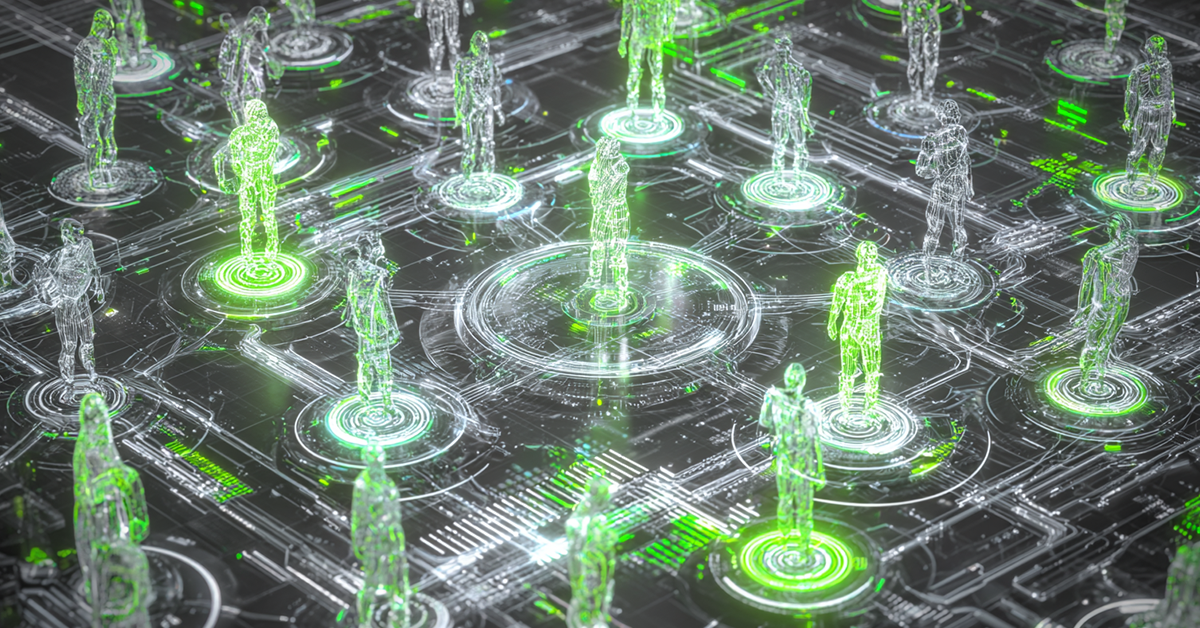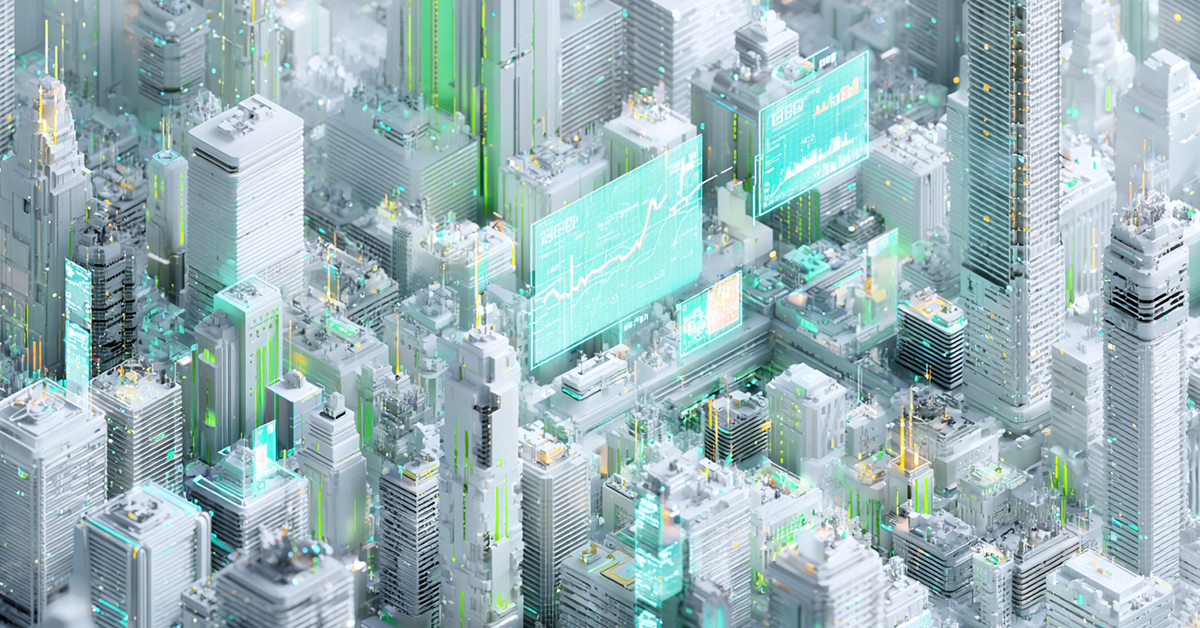
A new technological paradigm is emerging at the intersection of two rapidly evolving areas of digital transformation – self-configuring algorithms and distributed data storage systems. These solutions, each of which has already had an impact on finance, logistics, and telecommunications, are beginning to intertwine to create next-generation hybrid architectures. In our article, we will consider how artificial intelligence and blockchain interact, their prospects, and why this combination can change the global technological landscape.
What Is Artificial Intelligence on Blockchain?
To understand how AI on the blockchain works, we must first define key concepts. Artificial Intelligence enables systems to learn, make decisions, and perform tasks that previously required human intelligence. Blockchain is a decentralized, immutable ledger that can provide transparency, security, and trust between network participants.
In the classic approach, AI systems are managed centrally: companies store data on their servers and control the algorithms. In the AI with blockchain model, machine learning and data processing become transparent and protected from manipulation. It is especially relevant in sectors where trust is important – from finance to medicine.
AI blockchain technology allows for the implementation of a trusted environment where data and models are used safely, and algorithm decisions can be verified by any network participant. It’s what fundamentally distinguishes blockchain artificial intelligence from traditional centralized AI.
AI and Blockchain Technology: How They Work Together

The combination of AI and blockchain technology enhances the strengths of both systems. Blockchain provides an immutable environment in which algorithms can safely perform their operations. At the same time, AI allows blockchain to adapt to new conditions, analyze the behavior of participants, and optimize processes.
AI ML blockchain solutions are already being used in various fields, from finance to healthcare. In particular, AI blockchain can be used to detect anomalies, prevent attacks, as well as assess credit risk or automate logistics operations. In this bundle, artificial intelligence in blockchain receives reliable, verifiable data, and blockchain receives smart management algorithms.
Real-World Applications of Blockchain AI
- Smart contracts with AI logic. Classic smart contracts are limited to strict “if-then” conditions. However, with the integration of AI, it is possible to implement conditional probabilistic logic, analyze participant behavior patterns, and make decisions based on dynamic input data. For example, in Nexchain, such AI-enhanced smart contracts can use transaction history and user behavior patterns to modify conditions dynamically: adjust terms, limits, or fees depending on the level of risk or network load;
- AI-driven DeFi tools. Decentralized finance is under stress from volatility, price attacks, and inefficient liquidity management algorithms. Integrating AI into blockchain allows you to predict market surges, assess credit risks in real time, and adapt interest rates based on user behavior and network activity;
- Decentralized AI marketplaces. The growth of AI models requires open platforms where algorithms can be safely shared and used. A decentralized AI network ecosystem, like Nexchain, creates an infrastructure where developers, data providers, and users interact without centralized intermediaries;
- Supply chain & IoT optimization. AI has proven itself in logistics and monitoring. IoT devices collect data on temperature, location, humidity, and other parameters in real time. AI modules analyze this data, identify deviations, and predict risks, and the blockchain records every step of the supply chain, from origin to delivery. Nexchain uses a DAG subsystem for parallel validation of logistics flows, which ensures low latency and full verifiability;
- Use supporting examples and data. The use of AI and blockchain in healthcare can reduce diagnostic time and improve the accuracy of disease predictions. There is also an increase in investment in blockchain based AI solutions in the financial sector – more than $3 billion in 2024 alone.
Participate in the presale of Nexchain, one of the leaders in the field of AI and blockchain solutions.
Benefits of Combining Blockchain with Artificial Intelligence
The integration of AI in blockchain is changing the logic of digital infrastructures: data is now protected, analyzed, and redistributed based on predictive algorithms. Platforms like Nexchain use hybrid consensus models and intelligent smart contracts, demonstrating how the combination of blockchain and AI allows going beyond classic automation.
Security and immutability
Security is the cornerstone of blockchain. But when coupled with AI, it reaches a new level. Nexchain uses an AI-enhanced PoS consensus that validates blocks and identifies suspicious activity in real time. Artificial intelligence analyzes node behavior patterns, their anomalous transactions and activity, while increasing the network’s resilience to attacks and spam traffic.
Thanks to immutability, every AI action, including predictions, smart contract adjustments, and control signals, is stored in the blockchain and can be verified post factum – it is a unique advantage of blockchain AI over centralized ML systems.
Enhanced data integrity for AI models
Access to reliable and up-to-date data is essential for training AI models. AI and blockchain technology, as implemented in Nexchain, record the origin, changes, and meta-information about each piece of data. Moreover, it uses a DAG architecture that allows parallel processing of data streams and instant verification of their validity.
This approach prevents “poisoning” of the training set and ensures that AI models are built on accurate and unchangeable sources. It is essential for critical industries – from finance to healthcare – where the slightest error can cost millions.
Privacy in ML workflows
Handling personal data in AI has always been a concern. But AI for blockchain offers a new solution: using confidential computing and native privacy support, such as zk-SNARKs, to protect sensitive data.
Nexchain uses modular ML workflows, in which data does not leave its storage, and training is carried out in a distributed manner. This architecture is especially relevant in the context of legislation such as GDPR, HIPAA, and ISO 27001. Users can share data for training models without revealing their contents, making it possible to create private but scalable AI systems.
Trustless infrastructure
Traditional AI systems rely on centralized providers: Google, OpenAI, Amazon, etc. However, in a decentralized AI network ecosystem like Nexchain, control is transferred to the community. All actions – from model deployment to API access – are governed by smart contracts, and decisions are made either by the DAO or by AI modules trained on user data.
The trustless environment eliminates the need to trust intermediaries and allows for the creation of open, verifiable, and secure platforms, be it for finance, IoT, digital identity, or decentralized marketplaces of AI models.
Challenges in Implementing AI for Blockchain Technology
Despite the huge potential of AI on blockchain, the integration of these two technologies is associated with a number of serious challenges. In order to create sustainable and effective solutions based on AI and blockchain, it is necessary to take into account technical, organizational, and regulatory limitations. Below are the main difficulties that developers and businesses face when implementing AI blockchain technology.
Scalability and performance
AI algorithms require high throughput to process large amounts of data and constantly update models. Most public blockchains (Ethereum, Bitcoin) have a limit of 10-15 transactions per second. In such a context, the implementation of AI blockchain requires the use of L2 solutions, or a transition to more productive networks (for example, Nexchain throughput up to 400,000 TPS).
High computing costs
Training even a basic NLP or CV model requires tens of GPU hours. Performing these operations on-chain is impractical due to gas costs and latency. The solution is off-chain computation + on-chain validation – an architecture in which AI is trained outside the blockchain, and its results are validated on-chain via zk-proofs or multi-signature checks.
Complexity of system integration
AI systems are dynamic, nonlinear, and use probabilistic models. At the same time, blockchain requires strictly deterministic, immutable transactions. This involves using middleware, such as oracles with AI inference, which connect off-chain AI and on-chain infrastructure. In addition, it is necessary to create special DSLs (domain-specific languages) to describe AI logic in smart contracts.
Regulatory and legal restrictions
One of the most pressing problems in the development of decentralized AI is legal uncertainty. Today, most countries do not have clear frameworks for blockchain and AI in healthcare, finance, or logistics. It creates obstacles to scaling, attracting investment, and commercial implementation of artificial intelligence and blockchain solutions.
The Future of AI and Blockchain Integration

The future of blockchain and AI is associated with several advanced concepts:
- Federated learning on blockchain. Learning on distributed data without centralized storage;
- DAO-controlled AI agents. Autonomous agents controlled by decentralized organizations;
- Quantum-proof algorithms. Resilience of both AI and blockchain to threats from quantum computing;
- Investments. Growth in funding for AI blockchain technology projects is expected in 2026 – the projected market volume will exceed $50 billion.
Conclusion
The interaction of artificial intelligence and blockchain is creating a new wave of technological solutions. From AI decentralized infrastructures to secure smart contracts, this merger opens up potential previously unavailable to either technology alone. Despite existing barriers, the synergy of AI and blockchain is already yielding results in medicine, finance, logistics, and DeFi.
While the market is just forming, investors and developers have a unique chance to participate in the transformation. If you want to be part of the future, start with crypto presales of projects like Nexchain, where technologies are created not for the sake of a trend, but for real application.
FAQs
Is AI centralized or decentralized?
AI can be either centralized (managed by a single organization) or decentralized, in systems built on blockchain, where management and decision-making are distributed among participants.
What are examples of AI on blockchain platforms?
Well-known examples include Nexchain, a platform that illustrates the potential of AI blockchain solutions in various industries: from finance to science.


